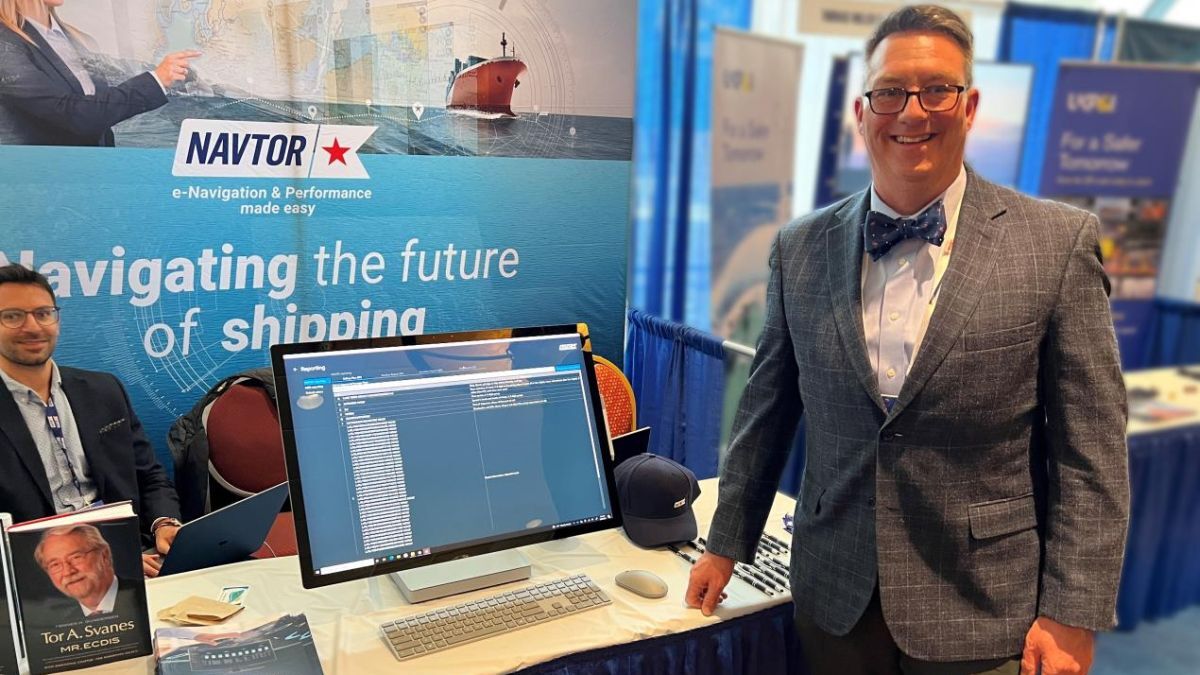 Benjamin Strong (USCG AMVER) sees integration of AMVER on Navtor’s software (source: Navtor)
Benjamin Strong (USCG AMVER) sees integration of AMVER on Navtor’s software (source: Navtor)
US Coast Guard (USCG) and Navtor are working together to improve emergency response to stranded ships and seafarers
Navtor has integrated information from USCG’s automated mutual assistance vessel rescue (AMVER) system, a crucial life-saving initiative, into its digital chart table software NavStation.
This integration will bolster the key support network for seafarers worldwide as it will encourage more ships and owners to participate in the voluntary scheme, first launched in 1958.
AMVER’s reporting scheme details sailing plans, positions, deviations and arrivals to pinpoint locations and routes of ships available to aid other vessels in trouble. If AMVER receives a distress call from a vessel outside the reach of the USCG or other participating coast guards, it can then alert nearby ships to sail to the rescue.
USCG said there is no place on the oceans that cannot be reached by an AMVER participant within 24 hours.
“AMVER represents the very best of what seafarers have to offer, the highest tradition of mariner helping mariner,” said USCG AMVER maritime relations director Benjamin Strong.
He notes the system has sent ships to 1,889 incidents in the last 10 years, saving 3,572 lives.
“It is incredible. A hugely powerful tool for search and rescue, but one that relies on ship participation to succeed,” said Mr Strong. “It can only ever be as strong as the network of vessels it attracts, so we have to continually grow that pool of volunteers.”
More than 11,000 vessels are currently involved in AMVER and 6,600 ships are reporting on a daily basis to the scheme.
Integrating with voyage planning software lowers the threshold to entry when there are more complex demands on ships.
“The feedback we receive from seafarers is they want to find a way to eliminate manual reporting, easing an administrative burden which, we have to admit, adds to existing duties,” said Mr Strong. “We obviously wanted to help and were keen to leverage any available technologies or partners to do so.”
Norway-headquartered Navtor launched NavStation digital chart table and software in 2014. The software layers voyage information over electronic navigational charts to unite data on a single, integrated platform. A benefit of this integrated approach is the ability to simplify tasks, cutting administration through automated processes wherever possible.
NavStation’s passage-planning module slices administration time from an average of over three hours per voyage to around just 30 minutes.
“This got some of our key customers thinking about what else it could do,” said Navtor North America regional manager Todd Allen. “One area where potential efficiencies were spotted was, of course, AMVER.”
Instead of having to manually enter data in detailed standardised language and codes, and then emailing it to AMVER, the information is automatically collated and sent at the push of a button.
“This was an intriguing idea that fitted perfectly with our mission of enhancing safety and operational efficiency through digital innovation,” said Mr Allen. “We are focused on making life simpler for those at sea and this seemed to be tackling a pressing, and important, issue for them.”





